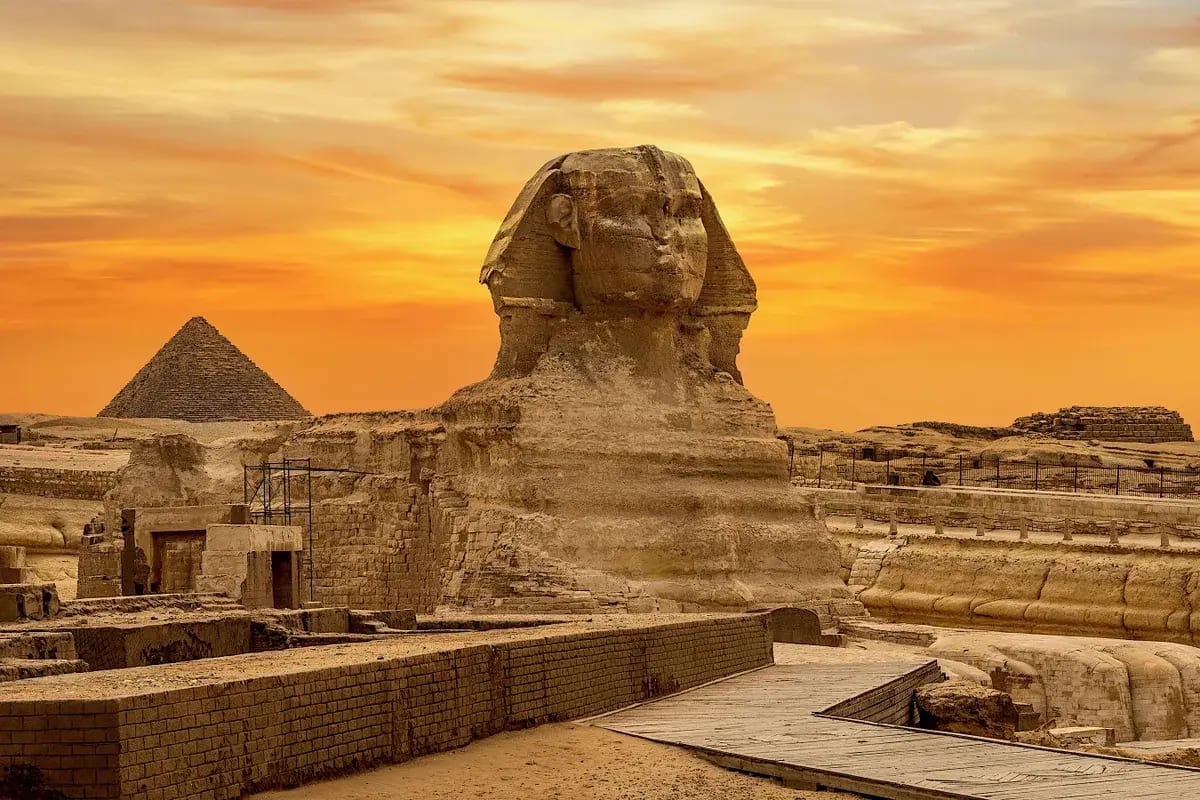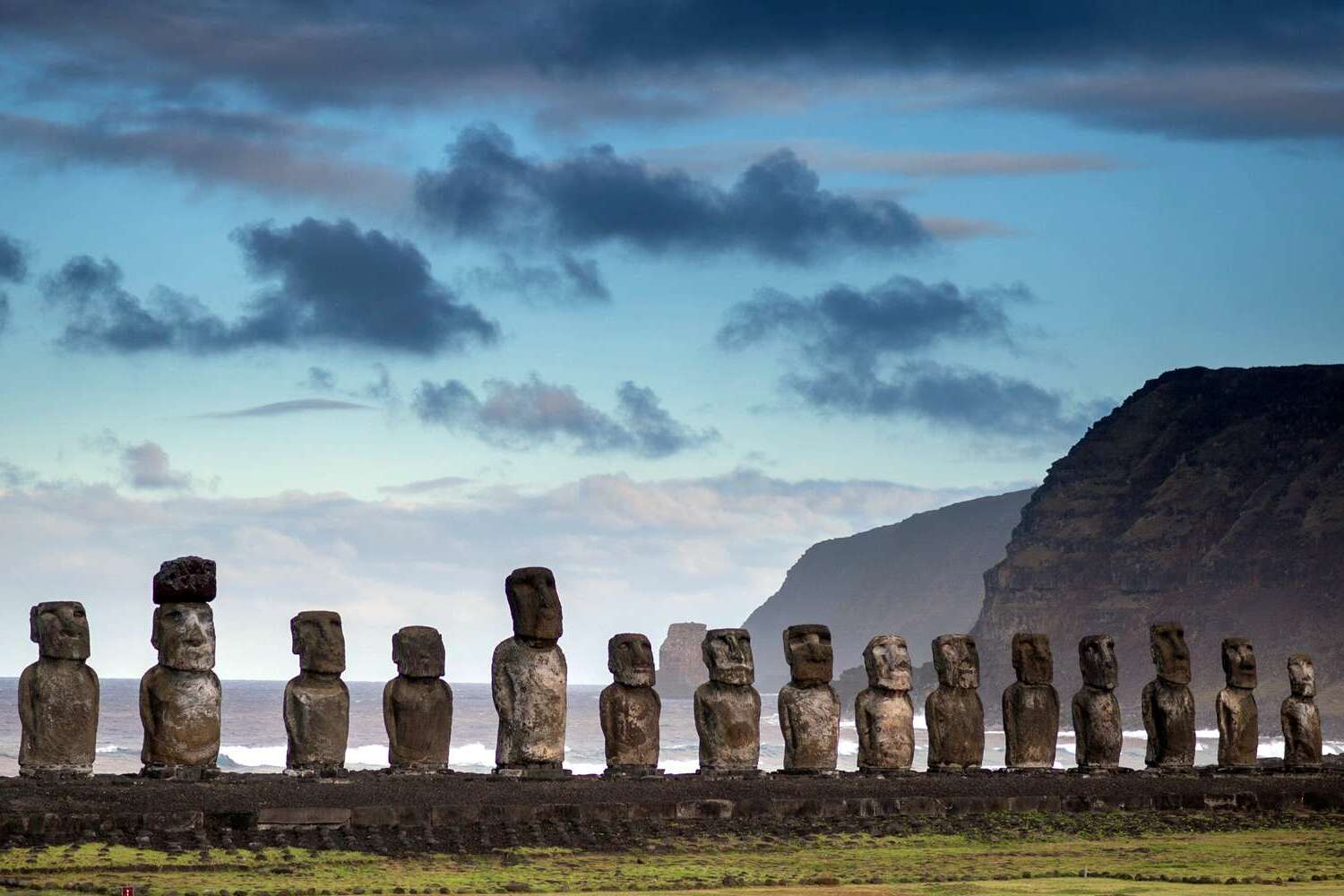
The Great Sphinx of Giza is one of the most iconic monuments in the world. This ancient statue, with the body of a lion and the head of a human, has fascinated people for centuries. But what makes it so special? Built around 2500 BC, it stands guard over the Giza Plateau, near the Great Pyramids. The Sphinx is carved from a single piece of limestone, making it a true marvel of ancient engineering. Its face is believed to represent Pharaoh Khafre, though some theories suggest otherwise. Despite its age, the Sphinx continues to captivate historians, archaeologists, and tourists alike. Ready to learn more? Here are 38 intriguing facts about the Great Sphinx of Giza that will blow your mind!
The Great Sphinx: An Ancient Marvel
The Great Sphinx of Giza stands as one of the most iconic monuments in the world. This colossal limestone statue, with the body of a lion and the head of a pharaoh, has fascinated historians, archaeologists, and tourists for centuries. Here are some intriguing facts about this ancient wonder.
-
The Great Sphinx is located on the Giza Plateau, near the Great Pyramids of Giza in Egypt.
-
It is believed to have been built during the reign of Pharaoh Khafre, around 2500 BCE.
-
The Sphinx is carved from a single piece of limestone, making it one of the largest monolithic statues in the world.
-
Measuring about 240 feet long and 66 feet high, it is truly a colossal structure.
-
The face of the Sphinx is thought to represent Pharaoh Khafre, although some theories suggest it might depict his father, Khufu.
Mysteries and Legends Surrounding the Sphinx
The Great Sphinx is shrouded in mystery and legend. Many stories and theories have emerged over the years, adding to its enigmatic allure.
-
One legend claims that the Sphinx was built to guard the Giza Plateau and protect the pyramids.
-
Another theory suggests that the Sphinx was a symbol of solar worship, aligning with the sun during certain times of the year.
-
The missing nose of the Sphinx has sparked numerous theories, including one that it was destroyed by Napoleon's troops, although evidence suggests it was damaged long before his time.
-
Some believe there are hidden chambers and tunnels beneath the Sphinx, possibly containing ancient treasures or secrets.
-
The Dream Stele, an inscribed stone slab placed between the Sphinx's paws, tells the story of Pharaoh Thutmose IV, who claimed the Sphinx spoke to him in a dream.
Construction and Restoration Efforts
Over the millennia, the Great Sphinx has faced erosion, vandalism, and other forms of damage. Various restoration efforts have been undertaken to preserve this ancient monument.
-
The Sphinx was originally painted in bright colors, including red for the face and body, and blue and yellow for the headdress.
-
In the 1400s, the Sphinx was buried up to its shoulders in sand, which helped protect the lower parts from erosion.
-
The first modern excavation of the Sphinx was conducted by Giovanni Battista Caviglia in 1817.
-
Extensive restoration work began in the 20th century, with efforts to repair the Sphinx's body and stabilize its structure.
-
In the 1980s, a major restoration project was undertaken to address significant erosion and damage caused by pollution and groundwater.
Cultural and Historical Significance
The Great Sphinx holds immense cultural and historical significance, not only for Egypt but for the entire world.
-
The Sphinx is a symbol of strength, wisdom, and protection in ancient Egyptian culture.
-
It has inspired countless works of art, literature, and film, becoming a global icon of ancient Egypt.
-
The Sphinx is part of the Giza Necropolis, a UNESCO World Heritage Site, which includes the Great Pyramids and other significant monuments.
-
The Sphinx has been a subject of study for centuries, with scholars and researchers continually uncovering new information about its history and construction.
-
It remains a popular tourist attraction, drawing millions of visitors from around the world each year.
The Sphinx in Modern Times
Despite being thousands of years old, the Great Sphinx continues to capture the imagination of people today. Its enduring legacy is a testament to the ingenuity and artistry of ancient Egyptian civilization.
-
The Sphinx has been featured in numerous films, documentaries, and television shows, highlighting its cultural impact.
-
It is often used as a symbol of mystery and ancient wisdom in popular culture.
-
The Sphinx has inspired various conspiracy theories, including claims of extraterrestrial involvement in its construction.
-
Modern technology, such as 3D scanning and imaging, has allowed researchers to study the Sphinx in greater detail than ever before.
-
The Sphinx remains a powerful symbol of Egypt's rich history and cultural heritage.
Fun Facts About the Sphinx
Here are some fun and lesser-known facts about the Great Sphinx that you might find interesting.
-
The Sphinx's eyes are about 6 feet tall, making them larger than the average human.
-
The ears of the Sphinx are over 3 feet long.
-
The Sphinx's headdress, known as the nemes, was a royal symbol worn by pharaohs.
-
The Sphinx's paws are about 50 feet long, roughly the length of a school bus.
-
The Sphinx's tail wraps around its right hind leg, a detail often overlooked by visitors.
The Sphinx and Its Surroundings
The area around the Great Sphinx is rich in history and archaeological significance, offering even more to explore and learn about.
-
The Sphinx Temple, located directly in front of the Sphinx, is believed to have been used for religious and ceremonial purposes.
-
The Valley Temple of Khafre, situated nearby, is another significant structure associated with the Sphinx.
-
The Giza Plateau is home to several other ancient monuments, including the Great Pyramid of Khufu and the Pyramid of Menkaure.
-
The Sphinx faces directly east, aligning with the rising sun during the equinoxes.
-
The Giza Plateau has been a site of continuous archaeological excavation and research for over a century.
The Sphinx in Art and Literature
The Great Sphinx has left an indelible mark on art and literature throughout history, inspiring countless works and interpretations.
-
The Sphinx has been depicted in ancient Egyptian art, including carvings, paintings, and statues.
-
It has been referenced in Greek mythology, with the Sphinx of Thebes being a famous example.
-
The Sphinx has appeared in numerous literary works, from ancient texts to modern novels, symbolizing mystery, power, and enigma.
Final Glimpse at the Great Sphinx
The Great Sphinx of Giza stands as a testament to ancient ingenuity and mystery. With its lion's body and human head, it has fascinated historians, archaeologists, and tourists alike. Built during the reign of Pharaoh Khafre, this colossal statue has weathered millennia, yet still holds many secrets. From its missing nose to the theories about hidden chambers, the Sphinx continues to spark curiosity and wonder.
Understanding the Sphinx isn't just about knowing its history; it's about appreciating the craftsmanship and the cultural significance it holds. Whether you're a history buff or just someone intrigued by ancient wonders, the Great Sphinx offers a glimpse into a world long past but never forgotten. So next time you see an image of this majestic monument, remember the rich tapestry of stories and facts that make it truly extraordinary.
Was this page helpful?
Our commitment to delivering trustworthy and engaging content is at the heart of what we do. Each fact on our site is contributed by real users like you, bringing a wealth of diverse insights and information. To ensure the highest standards of accuracy and reliability, our dedicated editors meticulously review each submission. This process guarantees that the facts we share are not only fascinating but also credible. Trust in our commitment to quality and authenticity as you explore and learn with us.


